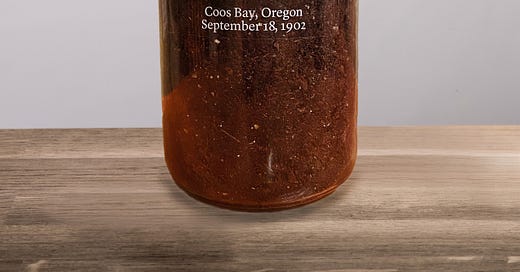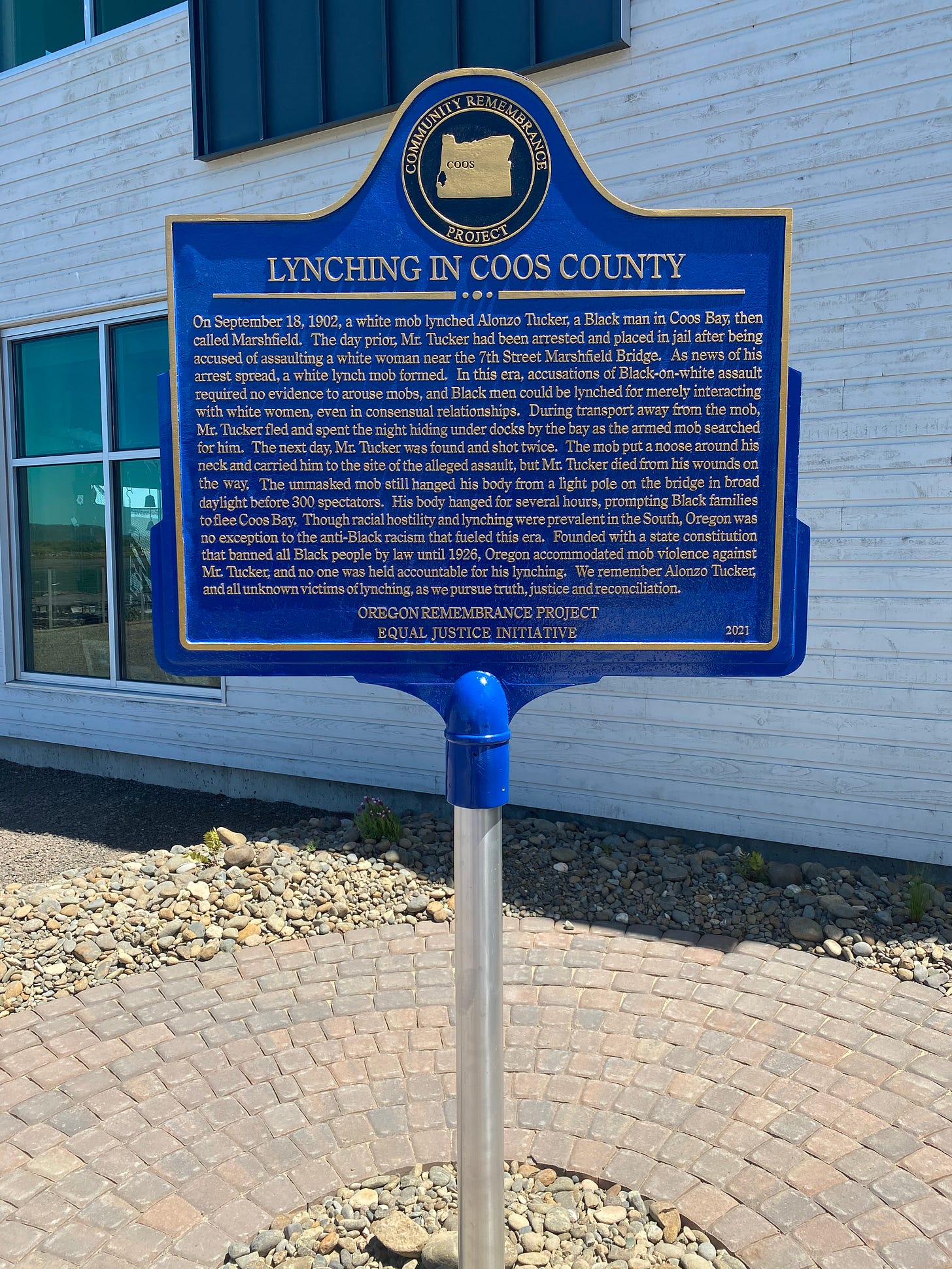How do you reconcile a lynching? Remembering Alonzo Tucker.
When we forget Tucker, we forget how far Oregon has to come to heal its relationship with African Americans.
Founder of the Oregon Remembrance Project. Seeking the truth and repair required to bring us closer to reconciliation.
How do you reconcile a lynching?
It starts with remembrance.
In 1902, Alonzo Tucker, a Black man, was accused of sexually assaulting a white woman. A mob hanged his dead body from a light pole in front of a crowd of 300.
Tucker is the only documented African American victim of lynching in Oregon. He’s one of nearly 6,500 African Americans lynched between 1865 and 1950, as documented by theEqual Justice Initiative of Montgomery, Alabama.
After a life changing trip to the American South and the Equal Justice Initiative’s National Memorial for Peace and Justice, I started the Oregon Remembrance Project in 2018 to help communities in Oregon unearth stories of injustice and engage in the necessary truth telling and repair required to reconcile instances of historical harm. We can’t change the past, but we can always change our relationship to the past. In partnership with the Coos History Museum, the City of Coos Bay, and the Equal Justice Initiative, we have worked to enter
Tucker’s story into the collective memory and collective consciousness of Oregonians.
“Truth and reconciliation are sequential,” says Bryan Stevenson, executive director of the Equal Justice Initiative. In order to get to reconciliation, we must first engage in the requisite truth-telling.
This truth-telling began on February 29, 2020, when a crowd of 200 gathered in Coos Bay for a soil-collection ceremony near the spot where 28-year-old Tucker was killed. Two jars of soil were collected. One jar was sent back to the Equal Justice Initiative to be displayed at their Legacy Museum and the other became part of a Coos History Museum exhibit.
Each bit of soil, gathered from three locations, tells part of Tucker’s story. The first bit was gathered from underneath local docks, where Tucker spent the night hiding from a mob that had formed to lynch him. The second bit was gathered from Front Street, where Tucker was repeatedly shot and left incapacitated before a noose was placed around his neck. The third bit was gathered from the former site of the Marshfield Bridge, where the mob strung up Tucker’s dead body from a light pole as the crowd looked on. Even children were a part of the lynch mob.
His body was left hanging for several hours. All of this occurred in broad daylight without a masked man in the crowd, and no one was ever held accountable for Tucker’s lynching.
News of the lynching made headlines across Oregon, and most newspaper accounts openly sympathized with the lynch mob. African Americans subsequently fled the Coos Bay area over fears of future violence.
In 1974, a Coos Bay World newspaper reporter interviewed three men who were boys at the time of the 1902 lynching and provided eyewitness accounts. All three believed Tucker was lynched over a consensual relationship with the woman who accused him of assault.
Our collective memory and our collective consciousness hold power. When we forget Tucker, we forget how far Oregon has to come to heal its relationship with African Americans.
On June 19, 2021, a crowd of 300 in-person and 300 virtually paid witness to the lynching of Alonzo Tucker with the unveiling of an Equal Justice Initiative historical marker in Coos Bay. The historical marker is two-sided. One side tells the story of lynching in America as a whole and the other side tells the story of Tucker—these stories have become a permanent installation in the geographic memory of Oregon. Tucker’s life may have ended from a light pole on the Marshfield Bridge, but that’s not where his story ends. 600 people, double that who were at the 1902 lynching, gathered to pay their respects to his memory—proving that we have the power to rewrite the ending to history’s stories.
How do you reconcile a lynching? It starts with remembrance, then it moves to repair.




